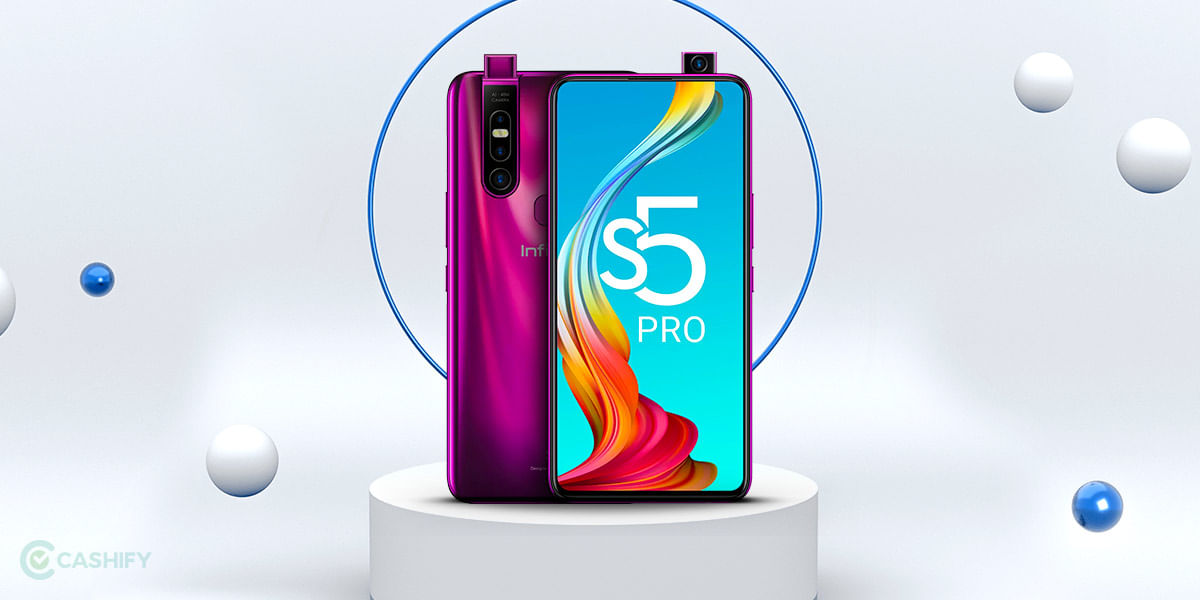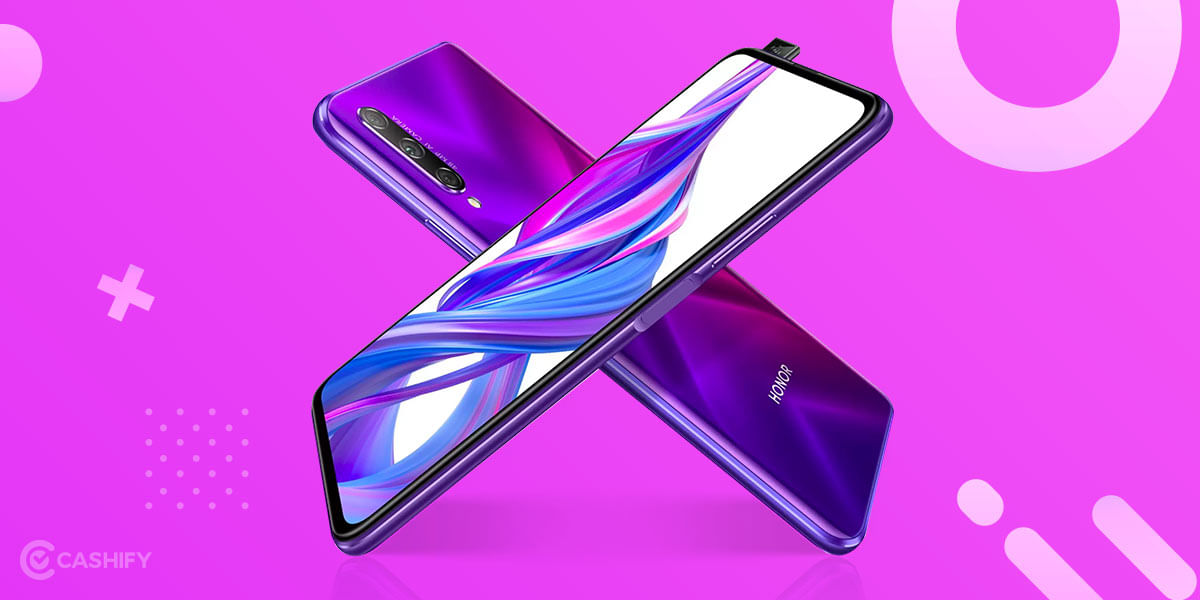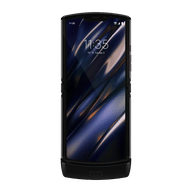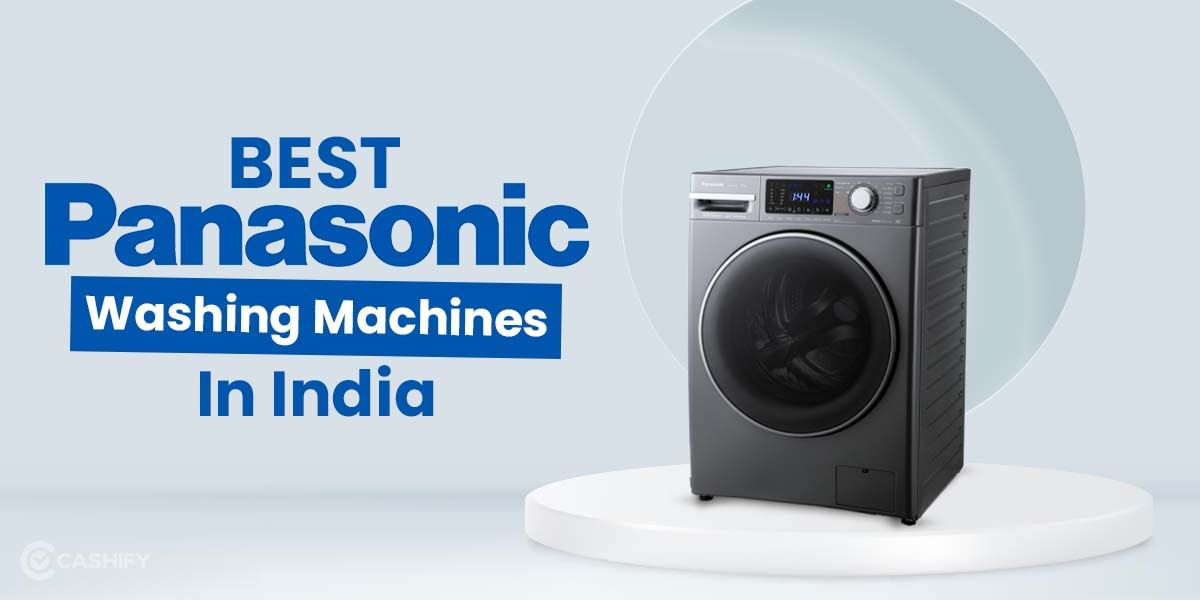Introduction
Motorola Razr, one of the most awaited and innovative smartphones of year 2020 is finally announced in the Indian market. As foldable smartphones are hitting the market, we have seen many innovative designs by numerous brands that showcase how the most practical form a smartphone can have to offer dual-screen/ or a much larger screen to consumers. Be it the Galaxy Fold, the Huawei Mate X or the LG G8s dual-screen, all of them tried getting near-perfect as the foldable smartphone we have dreamt of. One of the most eye-catching contenders and perhaps the one with almost idealistic designs was the Motorola Razr that became available to customers starting January 2020. The device took us back into days when people often used to carry flip phones that had a screen on top and a physical keyboard at the bottom when unfolded.
Also Read: Latest Mobile Phone Reviews
The Motorola Razr brings back the iconic Motorola clamshell design that became popular with the Motorola Razr V3 and was perhaps one of the coolest phones you could get in those days. This new avatar brings up an interesting configuration under the hood while retaining the old-school clamshell design that almost every one of us wished to get in 2020. Since the device comes at a hefty price tag of ₹1,24,999, you should be solidly sure whether to invest in it to upgrade your existing device.
So, here’s our review for the Motorola Razr smartphone to let you know all the amazing features and also the compromises you might have to deal with of you get your hands on this ‘nostalgia’ bringing device.
Prices in India, Variants, Availability
The Motorola Razr (2019) comes at a price tag of Rs. 1,24,999 and is offered in the sole, 6GB RAM + 128GB storage variant. With a single Noir Black colour option, you can currently pre-book the device through Flipkart and offline stores and it will go on sale in India from April 2.
Box Contents
Considering the hefty price tag, the unboxing experience was very eminent and we had fun exploring the box contents of the Motorola Razr. Inside the box, we get:
- Moto Razr smartphone
- A TurboPower wall charger
- USB Type-C cable
- Razr USB Type-Cearbuds
- A headphone jack to USB-C adapter
- Sim Ejector Tool
- Documentation
Specs at a glance
Before we get into the device and its in-depth review, let’s have a quick look at the key specifications. Here is the list of what the device is offering in just Rs.1,24,999:
- Display: Flex View: 6.2″ foldable pOLED, HD (2142×876 p), Quick View: 2.7″ gOLED, 600×800p
- Chipset: Qualcomm Snapdragon 710, octa-core, 2.2 GHz
- RAM & ROM: 6GB/128GB
- Software: Android 9 Pie
- Rear cameras: 16MP
- Selfie camera: 5MP
- Battery: 2510 mAh Battery
- Weight: 205g
- Dimensions: Unfolded: 72×172×6.9 mm, Folded: 72×94×14 mm
With key specs discussed, let’s jump right into the review of the Motorola Razr.
Design and Build
The design is pretty much divergent from almost every smartphone we have seen in recent years. It is the similar clamshell design inherited from the original Motorola Razr V3 that the 90’s crowd will surely remember. The folding mechanism is similar to that of Galaxy Fold but doesn’t expand out to provide a tablet-sized display. Unfolding the smartphone gives you a decent 6.2-inch smartphone, instead of the 7.3-inch display that you get on the Galaxy Fold.
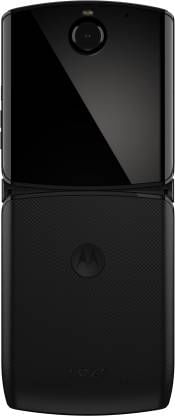
A disappointing thing for many would be the fact that Motorola has used much less metal on its super-expensive Razr smartphone. The plastic, precisely calling it rigid polycarbonate, is major found at the lower part and gets a dotted surface, which is supposedly for a good grip. Whereas, the top half of the device, which holds the 2.69-inch Quick View display and a camera, gets glass design.
Talking about the hinge, it feels secure and robust. The side edges of the Razr is made of metal and so is the backside of the hinge. There’s no noticeable crease on the screen as we saw with Huawei Mate X. Unlike other smartphones that we saw in 2019, the Motorola Razr still isn’t completely bezel-less as does retain the old-school chin which houses a capacitive fingerprint scanner.

The vents are usual with the bottom of the phone comprising of a USB-C port along with a mono speaker. Placement of the volume rocker and the power button is simple with both of them residing on the upper right side of the phone.
There does exist a noticeable gap between the display and the hinge which sometimes get accumulated with dirt and particles, but it can be cleaned easily. The handset is not that thick (6.9 millimetres) when folded. This can, however, be ignored as this transforms a large 6.2″ device to about half its size so it’s more comfortable for your pocket and fit pleasurably in your palm. Although for some the device might feel chunkier and heavier, it fits very comfortably in the hand. Thanks to the curved edges and efficient weight shifting towards the lower part which prevents the phone from diving down when you’re using it.
Display
If talking about the specs, Motorola Razr sports a primary 6.2-inch P-OLED foldable display with 876×2142 pixels resolution while the secondary display is a 2.7-inch G-OLED with a screen resolution of 600×800 pixels. The display is vibrant and it is one of those foldable panels made out of plastic similar to Samsung Galaxy Fold although with a downgrade when it comes to its specifications.
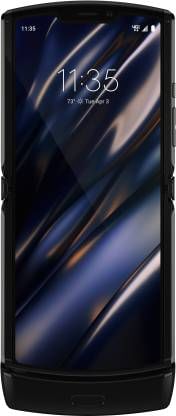
We used the device for a while only to find out that the display squeaks a bit. It, of course, isn’t an ordinary phone but at the end of the day, it makes a squeaky sound when you are unfolding it which although isn’t a flaw or something but it is there. The display has undergone rigorous durability testing so you can be assured the display won’t give up so soon. The display made up of plastic isn’t flat either but rather has a bit of a raise in the lower part of the display compared to the upper half. Also, you can simply feel the hinges and other mechanisms underneath the display if you pay close attention to it.
The secondary display mounted on top when folded acts as a viewfinder for basic notifications and timekeeping. Although it isn’t that useful, the display makes it easy to check for time and notifications at a glance rather than unlocking the phone every time you need to check it out.
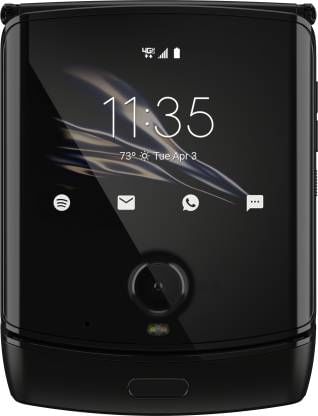
The primary display also limits YouTube at 720p which is a bit off-putting but you won’t see any difference when playing games on it. The colours on the display are robust and punchy. The display has an sRGB coverage score of 203.2% which when compared to iPhone 11 Pro (118.6%) or Google Pixel 4 (130.1%).
Next up, on the brightness parameter, the display can reach a nominal 386 nits when it makes it a lot dimmer than other flagship smartphones falling in the same price point. When it comes to surfing the web and social media apps, the app does provide an edge over others than to its tall screen so you won’t feel any disappointment here as well.
Performance
Talking about the configuration under the hood, the device comes with a Snapdragon 710 10nm octa-core processor with two 2.2GHz Kryo 360 Gold cores and six 1.7GHz Kryo 360 Silver cores. Along with it, the device has an Adreno 616 GPU on-board with a single 6GB RAM and 128GB of internal storage configuration that makes up the hardware cadre of the device.
Motorola Razr has too many ways it can disappoint you. One of these is the hardware embedded within which is the Snapdragon 710 so don’t expect it to dazzle you anytime soon. The phone comes handy for everyday usage although you can play a tonne of games on it ensure either you play sporadically in bursts if its graphics-intensive or get a slew of lightweight games off the internet.
We tried a few games on the phone like Asphalt 9: Legends and although you can play the game on it, get ready for frame drops and a few hiccups here and there during your gameplay. On Geekbench 5, the device scores 1,406 points on multi-core which is half of what OnePlus 7T scores and almost 1/3rd of what Galaxy Note 10 Plus (5,781 points) scored.
Software
Talking about the software, the phone arrives with Android 9 Pie out-of-the-box which is one-down from what other flagship smartphones are releasing this year. Motorola has worked out a bit on using the dual displays such as when you tap on email or text on the secondary display and unfold the phone, it will automatically display content on the primary one. There’s a Quick Look feature on the secondary display that showcases some actions that you can take without unfolding the phone which saves some time unlocking the phone and checking out the message or notification you received.
Cameras
Motorola Razr sports a dual rear camera setup with a main 16MP sensor with 1.22micrometer pixel size, f/1.7 aperture, Dual Pixel PDAF and there’s a 3D ToF depth sensor flanking it at the world-facing side. The front, on the other hand, is a tiny 5MP sensor with f/2.0 aperture and 1.12micrometer pixel size that takes selfies when you have unfurled the device just like the good old days.

Talking about the main shooter at the back, we tried it for a while and found out that it can capture quality images but surely not on-point with a flagship smartphone, to be honest. The camera is located just under the secondary display so that you can use it for both regular and selfie using the small screen as a viewfinder. Moto Gestures are active and trigger the shutter to capture images.
With 16MP in use, the sensor size is 1.22microns which is higher than that of Moto Z4 even though the latter one has a 48MP sensor. This gives Razr an upper hand in daytime photography which is fairly average or good if not the best. The colour vibrancy is good during a daytime shot while the shots indoors turn out to be white-washed with a lot of light in the background that eats up the details lying in the shot.
At night time, the Night Vision mounted on Motorola Razr does capture fully lit images but the shots are too illuminated and overexposed. The details are fairly lost which is another turn off if you are using Motorola Razr for photography.
The selfie shooter can take average photos given that it is just 5MP which is by far the lowest in flagship phones this year. The depth sensor doesn’t seem to work when I tried it for a couple of days though. You can use it for video calls or take average selfies though which seems to be a fairly expensive deal because you will be spending $1,500 on it.
Checkout: Best Camera Phones
Battery
Considering the hefty price tag and especially what its rivals and even budget smartphones offer nowadays, the Razr gets very disappointing in the battery department. The device is juiced up by a much smaller 2,510mAh cell which already sounds too unreliable and surprising for a $1,500 smartphone. We are hardly able to derive a full day’s battery life even on moderate use. There’s no wireless charging on the Razr. We do get an included 15-watt TurboPower charging wall plug, which in our testing juiced up the device to 100 per cent in about 90 minutes. Battery configuration might be a deal-breaker for most of us as there’s no use of so many features and innovation if you do not get enough power to drive it. You do have to tweak in a lot of changes such as using a dark wallpaper, toggling connectivity options frequently and use power-saving modes to make sufficient time before the next charge.
Audio, Connectivity, Biometrics
Moto also added huge speakers under a metallic grille that encompasses across the entire bottom edge of the chin alongside a 15W-capable USB-C port. There is just a mono speaker, but it’s sufficiently loud. We get four microphones and yes, there is no headphone jack, but the company will include a USB-C adapter in the box.
For security, we get a capacitive fingerprint sensor placed on the thick chin at the bottom. Being a capacitive sensor, it works seamlessly smooth and is pretty fast and accurate. But we do regret the fact that its placement could be somewhere else. It cannot be placed at the back but Moto could have embedded it in the power button as we have seen in numerous other smartphones such as the Realme 6 and Redmi Note 9 Pro. This is more pronounced as the chin does eat up much of the space thereby reducing the aspect ratio and making the device look a bit dated. There is also an option to unlock the device through face authentication via the 5MP internal camera.
Pros & Cons
Pros:
- Attractive design
- Foldable display
Cons:
- Too expensive
- Poor battery
- Average Camera
The Motorola Razr is the device which will attract a lot of people. If you are a fan of old-school flip phones, this would impress you as it gives that nostalgic feel thereby giving modern-day smartphone capabilities. But yes, there are many compromises you need to deal with if you wish to get the charm of a clamshell device.
Firstly, the internal specifications are nowhere close to any flagship that you can get at half of the price. The most noticeable flaw is a small and untrustworthy 2,510mAh battery and below-average camera performance. The quality is also not very premium as the display feels plasticky. The phone too is very fragile according to numerous experts thus limiting a more aggressive use.
A direct competition to the Motorola Razr is the Samsung Galaxy Z-Flip which packs much better quality in design, a much more powerful high-end processor, better cameras and a more decent battery life at a lower price tag of Rs. 1,09,999. You can also invest a few more bucks and go for the much better Samsung Galaxy Fold which gets a much more practical design and configuration. But if you are one of the old-school Motorola fans, the Razr does give the desired strong and powerful nostalgia.


